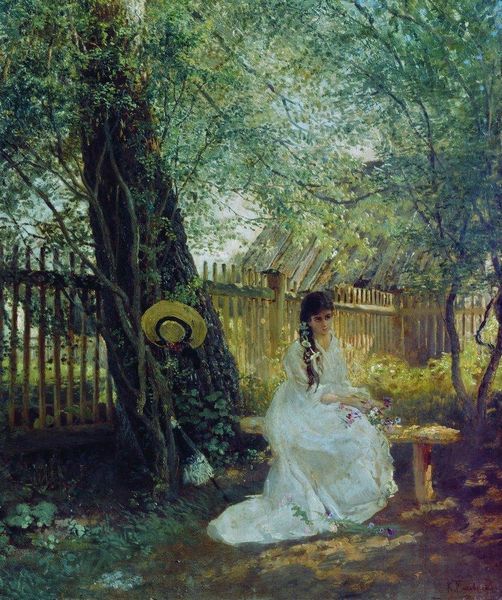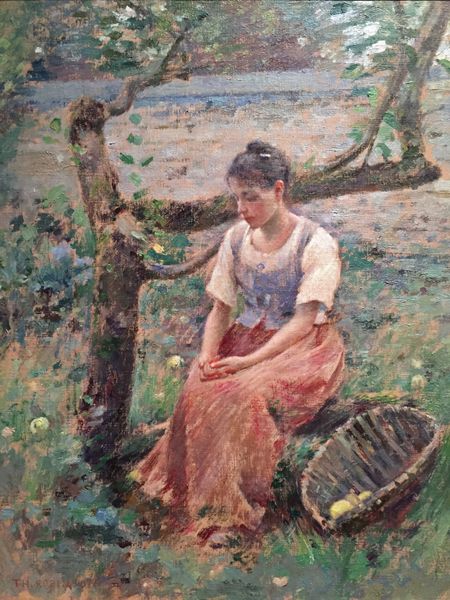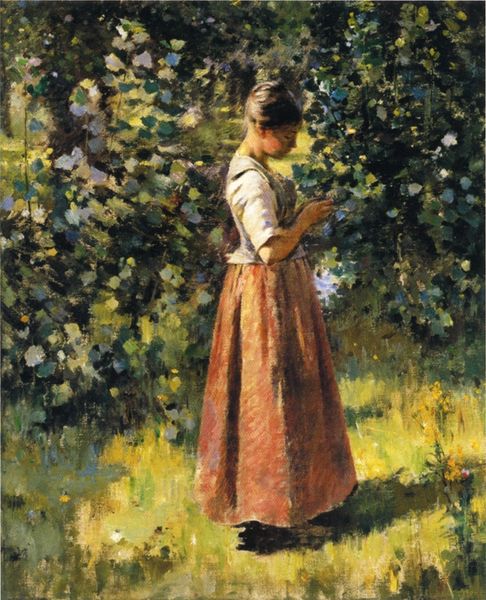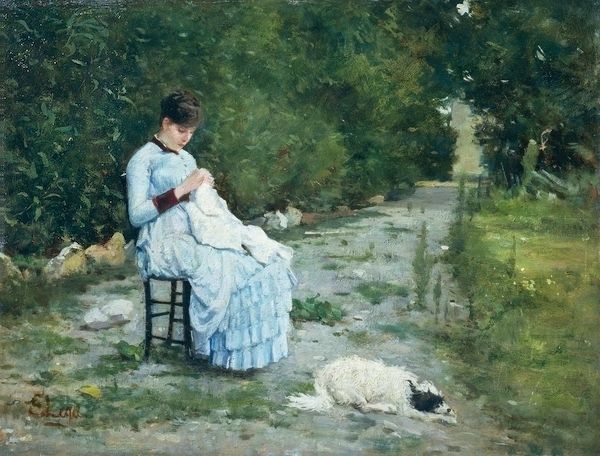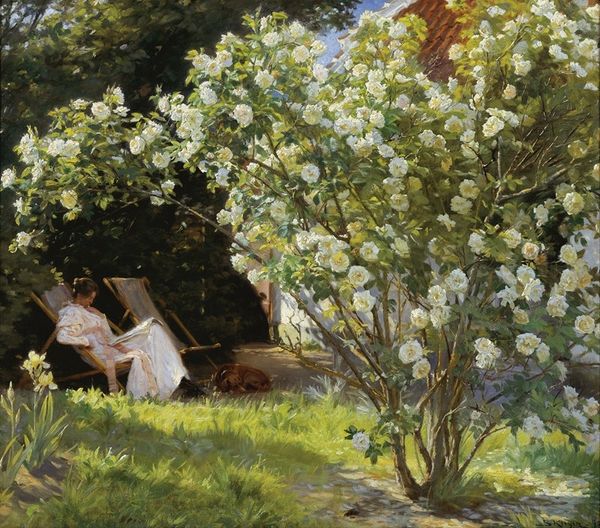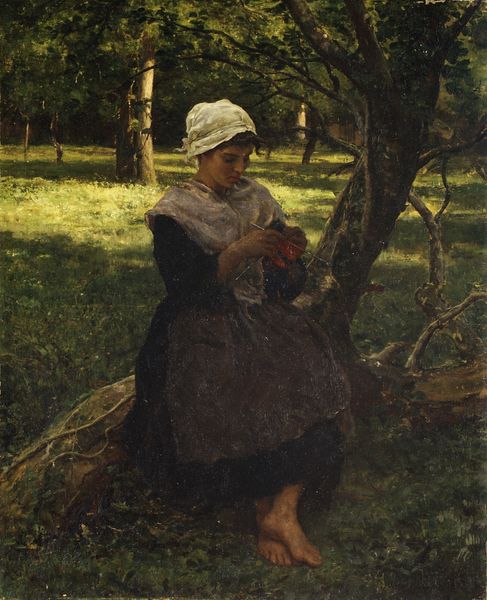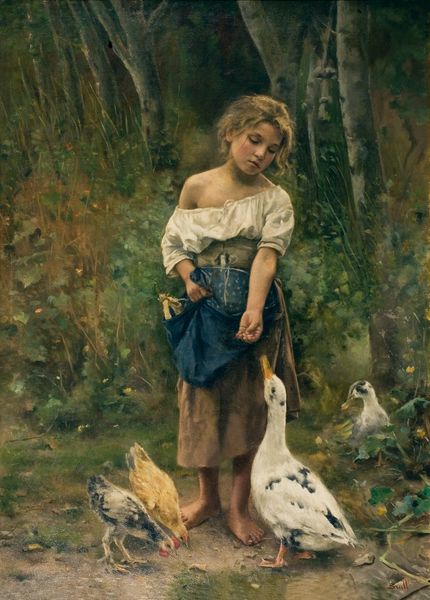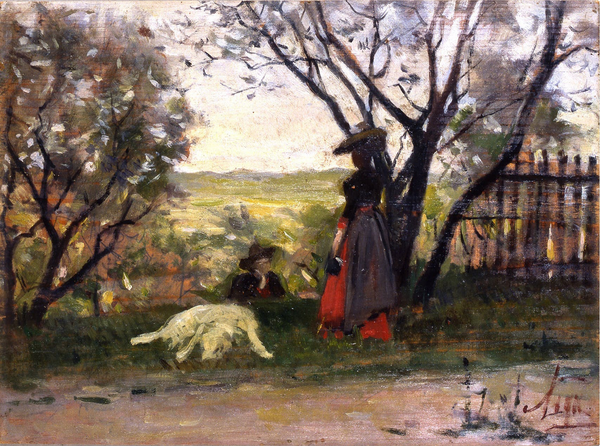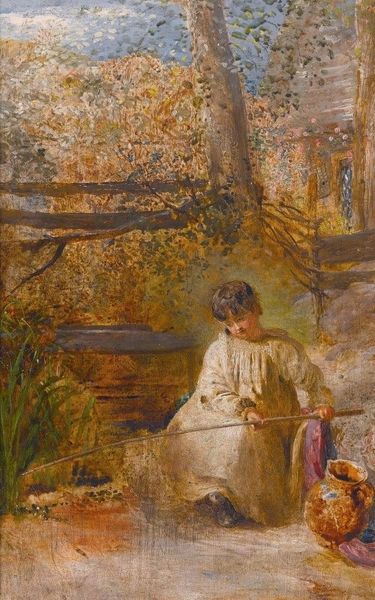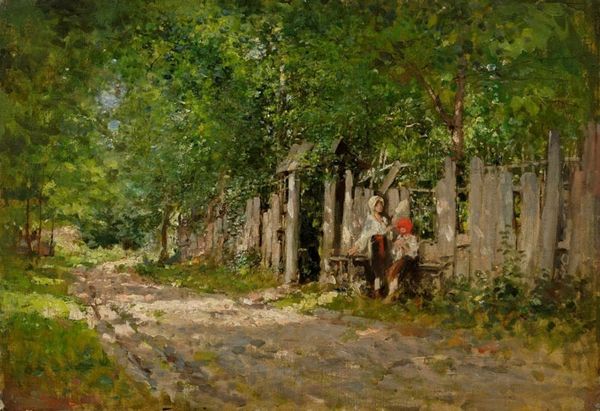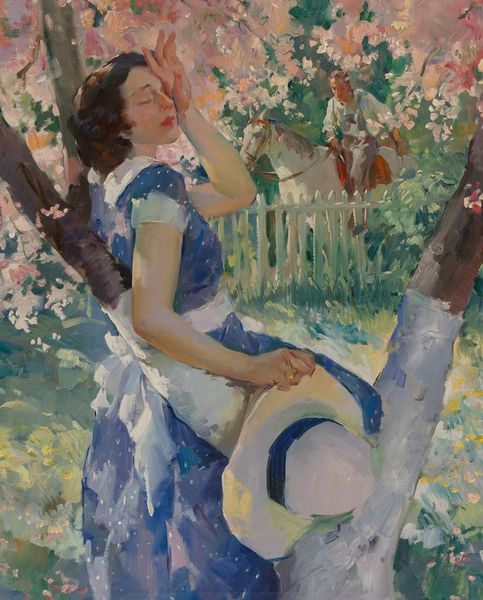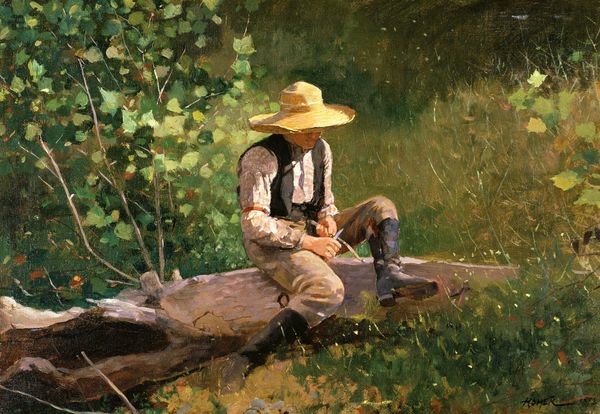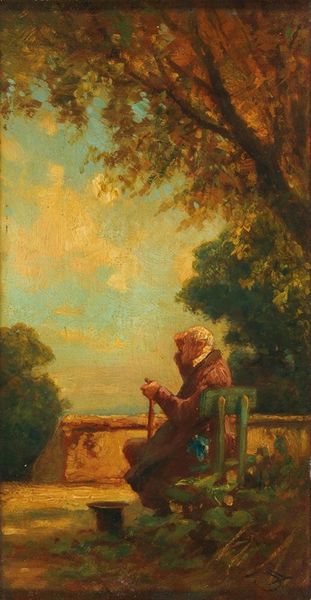
Copyright: Public domain
Curator: Theodore Robinson's 1895 oil painting, "The Lane," offers a beautiful snapshot of a figure in a summer landscape. What are your first thoughts on this one? Editor: A dreamy, almost wistful quality. The soft brushstrokes and the hazy light give it a very idyllic, romantic feel. It feels very removed from the urgencies of, say, urban life. Curator: Indeed, Robinson was working in a plein-air style here, attempting to capture the immediate impression of light and atmosphere. You see a young woman, largely obscured by shadow, relaxing against a picket fence and foliage, reading. She seems both present and far away. Editor: I'm immediately thinking about how these idyllic scenes often obscure the labor that creates them. Who owned that land? Who maintained it? What were the power dynamics at play that allowed this leisured moment to exist for her, presumably a woman of privilege, while others were excluded or toiling in less visible spaces? Curator: An important point, of course. Consider though that there's a distinct symbolic weight to this "leisured moment." Think of it as representing a sense of pastoral calm but also of individual retreat, common during this time as urbanization changed American life. Robinson imbues these locations with symbols of lost innocence. Editor: That tracks with the Impressionists more broadly. They captured fleeting moments but, too often, the access to those moments was deeply unequal. A lot of emphasis on the beauty of light without reckoning with the societal structures creating the conditions for leisure. Curator: Perhaps the light itself becomes a symbol then, of beauty but also elusiveness, or of an innocence perhaps never fully present. And perhaps this is what compels viewers, because it is a space we all long to return to. Editor: I see your point about the visual symbolism connecting it to yearning. But I wonder how much our contemporary understanding of this visual language is complicated when we actively consider social imbalances during that era. The painting doesn't lose its aesthetic allure, but it surely adds a crucial layer of meaning. Curator: Absolutely. Context illuminates the complex narratives embedded within even the most serene images. Thanks for shedding light on some of the darker spaces embedded in "The Lane." Editor: Thank you. Thinking about both the seen and unseen allows us to connect to these works on multiple registers.
Comments
No comments
Be the first to comment and join the conversation on the ultimate creative platform.

